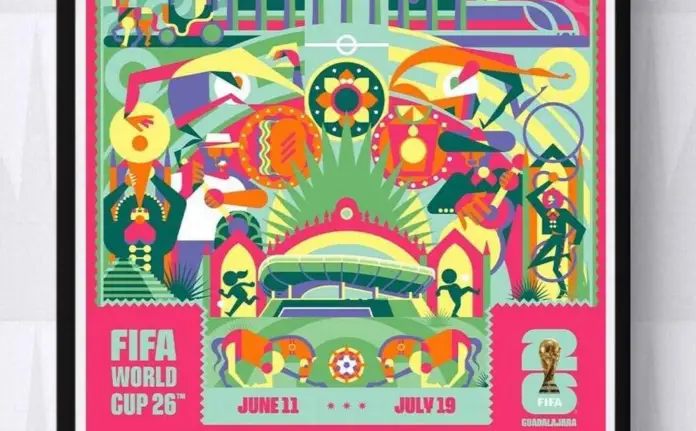The Guadalajara Metropolitan Area has a lot of work to do just over a year before it hosts the 2026 World Cup again. Today, Pablo Lemus presented an overview of all the construction projects that will be carried out around the city to prepare for the four matches at the Guadalajara Stadium during the World Cup.
Jalisco Governor Pablo Lemus confirmed that all the work to be done will be completed by April of next year: “Everything will be finished by April 2026 at the latest, because FIFA asks us not to carry out any construction work in places, especially those that will be used for the 2026 World Cup. Everything will be finished by April 2026,” he stated.
One of the most important projects in the Guadalajara Metropolitan Area has been the Miguel Hidalgo y Costilla Airport, which is nearing completion. In addition to the renovation of the facilities, two other projects are being carried out simultaneously. The rehabilitation of the Chapala Highway, the main artery providing car access to the airport. The road will be resurfaced with hydraulic concrete, with streetlights, new side lanes, and a bike path.
An alternate access route to Guadalajara International Airport is also being built. A new road will be created through the municipality of Tlajomulco de Zúñiga and Adolf Horn Road for access to and from the airport.
In Guadalajara, the FIFA Fan Fest will be held. Liberation Plaza will be the venue for all fans who cannot attend matches at Guadalajara Stadium. “We are going to remodel and reinforce the structure to provide security for all Fan Fest attendees. We are going to completely renovate the entire structure of Plaza Fundadores, that is, what we know as Plaza Tapatía: all the walkways that connect to the Cabañas Cultural Institute, which is where the Fan Fest will be held, will be completely renovated. We are going to renovate the area’s fountains while architecturally preserving them, but we are going to completely renovate them, so that the entire Plaza Fundadores, and the entire Fan Fest, will look truly beautiful,” said the governor.
Another project about to begin will be at the Glorieta de La Minerva. At the connection between López Mateos and Vallarta avenues, the sidewalks around the sculpture will be renovated to accommodate the flow of people during the World Cup and also for the people of Guadalajara. In addition, a walkway will be built inside the roundabout so people can stop by and take photos with one of the city’s icons.
Finally, Pablo Lemus announced that the Jalisco Stadium will serve as the training venue for the 2026 World Cup. The two-time World Cup host city joins the Aga Academy, Atlas’ training center, and Chivas Verde Valle, the training center for Club Deportivo Guadalajara, as other venues in the Jalisco capital.
2026 World Cup Poster Revealed
A special day for Guadalajara, as the city’s poster was officially announced as the host city for the 2026 World Cup. Designed by artist Cuemanche, it portrayed all the traditions of the Guadalajara Metropolitan Area, with the Guadalajara Stadium as its focal point.
The poster uses pink, green, and yellow as the main colors to define all the elements included in the illustration, portraying the most important and iconic places in Guadalajara and its surroundings.
The Degollado Theater and the Guadalajara Cathedral, located in the center of the Jalisco capital, were combined. In addition to having two other religious sites represented, the Basilica of Zapopan and the Expiatory Temple, two of the oldest buildings in Jalisco, the state is characterized by many elements that are part of the Mexican identity. Mariachi and Charrería were featured as two of the elements that are part of the state’s society. Also featured in various versions were the tequila theme, with agaves and the Jimador. A “caballito” (little horse) with its corresponding lemon was also featured. Regarding gastronomy, the torta ahogada (drowning cake) was included as a typical dish of the region.
Other elements of the state were included, such as the pre-Hispanic settlement of Guachimontones, located near the Guadalajara Metropolitan Area. Also featured are horses that are part of the Charrería (a traditional dance) and the iconic calandrias (a traditional form of carriage) that are a means of transportation in downtown Guadalajara. Finally, as part of the city’s modernity, a train was included, representing the Light Rail lines that have enjoyed a boom in recent times.

Source: espn




